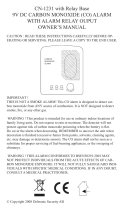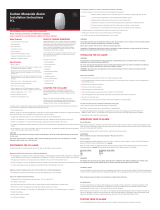
What To Do If The Alarm Sounds
16
If the alarm sounds, check for fires first. If a fire is discovered
follow these steps. Become thoroughly familiar with these items,
and review with all family members!
• Alert small children in the home.
• Leave immediately using one of your planned escape routes
(see page 26). Every second counts, don’t stop to get dressed
or pick up valuables.
• Before opening inside doors look for smoke seeping in around
the edges, and feel with the back of your hand. If the door is
hot use your second exit. If you feel it’s safe, open the door
very slowly and be prepared to close immediately if
smoke and heat rush in.
• If the escape route requires you to go through smoke, crawl
low under the smoke where the air is clearer.
• Go to your predetermined meeting place. When two people
have arrived one should leave to call 911 from a neighbor’s
home, and the other should stay to perform a head count.
• Do not reenter under any circumstance until fire
officials give the go ahead.
• There are situations where a smoke alarm may not be
effective to protect against fire as stated in the NFPA
Standard 72. For instance:
a) smoking in bed
b) leaving children unsupervised
c) cleaning with flammable liquids, such as gasoline
The CO sensor meets the alarm response time requirements of UL
standard 2034. Standard alarm times are as follows:
At 70 PPM, the unit must alarm within 60-240 minutes.
At 150 PPM, the unit must alarm within 10-50 minutes.
At 400 PPM, the unit must alarm within 4-15 minutes.
This carbon monoxide alarm is designed to detect carbon
monoxide gas from ANY source of combustion. It is NOT
designed to detect any other gas.
Fire Departments, most utility companies and HVAC contractors
will perform CO inspections, some may charge for this service.
It’s advisable to inquire about any applicable fees prior to having
the service performed. Kidde Safety will not pay for, or reimburse,
the owner or user of this product, for any repair or dispatch calls
related to the alarm sounding.
2553-7203-00(KN-COSMXTR-BA).qxd:_ 2013.9.28 9:06 AM Page 18





















